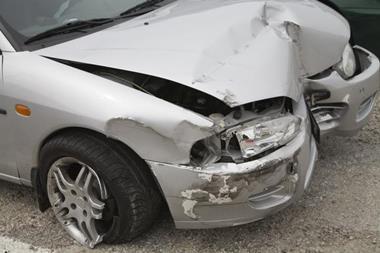Insurers in the personal motor sector are at last realising that survival depends on being able to charge customers more – there’s simply no other option left. Insurance Times looks at how rising bodily injury claims, aggregators and claims farming have affected the industry’s sustainability
Profit in personal motor insurance is about as rare as a celibate footballer. If the insurance industry needed a reminder of the damaging effect of cut-price premiums in the sector, it got it in spades this summer.
First-half financial results from a raft of insurers revealed deep fault lines in personal motor insurance, with most companies continuing to post sharp falls in sector profitability. Only Admiral bucked the industry trend, with its motor book posting a 30% increase in first-half profits this year on the back of a combined ratio of 83%, way ahead of 120%-plus combined ratios of rival insurers’ motor books.
QBE and HSBC both left the personal motor market last year, saying the sector is unprofitable. This summer they were joined by NIG. Bearing in mind that NIG’s parent, RBSI, is one of the UK’s biggest insurers, you can be forgiven for thinking there is no hope left for the sector.
Ripe for rises
Previous attempts to address falling profits in personal motor – through increased premiums – have fallen by the wayside, with rises proving unsustainable in what is probably the most competitive of all insurance markets.
But this year things are different. A raft of sector indicators distinctly reveal that rates for personal motor insurance are hardening, and the industry consensus is that there is a determination among insurers to hold the line and avoid falling prey to cut-price competition.
Zurich, Aviva, RSA, Fortis and Direct Line have all pushed through double-digit rate rises in personal motor premiums in the first half of this year. Irish insurer Quinn, which left the UK market when it was placed in administration, is back in the arena with a limited range of products and is now selling at much higher premium levels. Admiral, despite its bullish first-half performance, has followed suit and increased premiums by around 14% so far this year.
“Personal motor rates have hardened enormously,” says AXA?managing director of personal lines intermediary Mike Keating. “In a year you are seeing upwards of 30% in motor rates, and it is still continuing. We’ve been increasing rates from the end of 2008 through to 2010. Ultimately, private motor is not profitable and insurers need to address that – and that basically means insurers need to get more premium.”
Swinton chief executive Peter Halpin adds: “The market has moved collectively in an upward direction more than it has done in previous years. Insurers have sustained the increase for longer than they have done previously. It reflects the fact that a lot of insurers were under water in terms of their underwriting results, so they have had no alternative but to increase premiums.”
One recent snapshot, July’s Confused.com/ EMB car insurance price index, reveals that the average cost of a comprehensive car insurance policy increased 14.2% in the second quarter of this year, giving rise to a 31% jump in the cost of comprehensive policies in the year from July 2009. In the last three months alone, premiums have risen on average by 11.5%, while drivers under the age of 30 have seen their premiums increase by 13.4%, according to AA figures earlier this month.
Adding insult to injury
The principal driver behind the need to push up personal motor rates is the sharp increase in bodily injury claims faced by insurers. The rise in such claims has seriously affected insurers’ business pricing models, plunging personal motor deep into the red.
In 2009, the average cost of bodily injury claims per vehicle jumped more than 10% for claims of under £100,000, according to EMB. In addition, the number of claimants per claim also rose. Earlier this year, Zurich said that a 30% increase in bodily injury claims in the sector had resulted in a 50% increase in the cost of covering bodily injury losses.
“Third-party claims, particularly bodily injury claims, are a big factor in the problems facing the sector,” Halpin says. “Bodily injury claims have been increasing well above the rate of premium increases. That has left insurers exposed to such an extent that they’ve basically had to implement increases in premiums simply to keep pace with claims inflation.”
To a large extent, insurers have brought the problem on themselves through forlorn attempts to build market share based on what amounted to inadequate pricing. “Insurers were quite slow to address the increase in claims inflation led by bodily injury claims,” explains Deloitte insurance partner Ian Clark. “The rise in claims farming appears to have taken some insurers by surprise.”
You don’t have to be Hercule Poirot to detect the correlation between the rapid increase in third-party claims and the equally rapid expansion of the claims farming industry. The number of claims management companies operating in the UK has more than doubled from 1,400 in 2008 to more than 3,000 today.
“Claims farming is a large part of the problem,” says Keating. “AXA and other insurers want to address claims and pay out third-party injuries where their insured is at fault.
“The problem now is that it can become a feeding frenzy, with everyone wanting to take a cut out of every claim. The number of people now involved in this food chain restricts the ability of an insurer to settle claims speedily, and that drives up costs. The frequency of motor injuries is actually down, but on third-party injuries we’re actually getting more claimants.”
There is little doubt that we are more savvy than our parents’ generation about claiming for personal injury in the event of an accident.
Claims management companies’ advertisements, which urge viewers to get in touch to pursue claims for personal injury, are a staple of daytime television. It is this zeal on the part of such companies that sticks in the craw of the insurers, particularly since many of these companies are acting on referrals from insurance brokers.
“Lawyers and claims management companies contact people asking if they’ve been injured after a car accident. That kind of approach is encouraging a claims culture in this country similar to the one that exists in America. With that as a backdrop, I don’t see an end to the current trend of premium increases,” Keating says.
Taking action
With that in mind, is there anything insurers can do to bring third-party claims under control?
The industry has had some success in combatting the flagrant abuse of some credit hire companies whose activities have also been a significant factor in eroding sector profits. “Continued delayed payment by insurance companies on disputed claims and insurers striking bilateral deals with car hire companies did put pressure on the cash flow and profitability of credit hire organisations,” Clark says. “But the jury is still out on whether insurers can do the same with claims farmers. On the plus side, there’s a reasonable tailwind for change in the shape of the Ministry of Justice (MoJ) reforms and the Jackson Review, but claims management companies are adept at adapting to change.”
The MoJ reforms and the review should offer some solace to insurers. Although some insurers fear the reforms will lead to more claims, most are content that the extra pressure to complete the claims process more quickly will reduce costs significantly.
Meanwhile, the Jackson Review, which recommends banning referral fees, ending the recoverability of success fees and after-the-event insurance from unsuccessful defendants as well as capping legal success fees at 25% of damages, will curtail at least some of the excesses of claims management companies.
These operators are, however, here to stay: even if the increase in third-party claims is slowing, as some reports indicate, this type of claim is unlikely to disappear.
It is also not the only factor in the sector’s woes. Aggregators have taken a huge chunk out of insurers’ profits in personal motor, maintaining a constant downward pressure on prices. Unlike the effect of increased third-party claims, the spiralling cost of credit hire and rise in fraudulent claims, the lowest-quote basis of aggregators cannot be offset by spiking premiums and tighter regulation.
“In reality, it’s a combination of things that have got the market to where it is now,” Halpin says. “Personal motor is much more competitive than it was. Thanks to aggregators, customers are able to shop around a lot more. Because of that, insurers haven’t been able to hold rate increases in the way they used to be able to.”
With that in mind, why should the current price increases hold?
The difference now appears to be that, as well as more claims and more severe claims, insurers have also had to face up to life without the buffer of prior years’ reserve releases – and this has accompanied continuing falls in investment returns and low interest rates. Right now, insurers have nothing to bolster their bottom lines beyond increasing income from premiums.
Put simply, the industry has run out of options and been forced to refocus its attention on sound pricing and underwriting profitability to stay in the black. In essence, this means that insurers are happy to see higher-risk customers go elsewhere for their cover as underwriters seek to establish more accurate models to protect income.
“We have been taking strong action on motor for some time,” says Fortis Insurance underwriting director Adam Clarke. “These include consistent rate increases and increased pricing sophistication through channel-based pricing and full postcode rating, enabling us to price more accurately according to the specific risk.”
Against that backdrop, Fortis has increased rates 13.6% so far this year on top of a 20.9% rise last year. “These actions are having a positive impact on both revenues and loss ratio evolution, from which we are taking encouragement,” Clarke adds.
Holding firm
Despite the collective increase, however, there are still other players who will seek to offer cheaper alternatives. Hastings Direct has already launched a ‘no frills’ policy in response to the recent rises, which offers essential core features such as a courtesy car and EU driving. Policyholders can also purchase legal protection or protected no claims as an optional extra.
“If someone wants to indulge in kamikaze pricing, cutting their rates, then fine,” AXA’s Keating says. “But the dynamics of this market require insurers to increase rates, and that is why premium rises are holding.
“Major insurers simply aren’t making the returns they require out of personal motor – it’s that simple.”
Keating’s comments are echoed by Groupama Insurances director of personal lines Kevin Kiernan. “There is always the risk that some insurers may lose their underwriting discipline and see an opportunity to bring in higher levels of new business by either holding rates or possibly cutting them. Hopefully we have all now learned our lesson and this will not happen this time round.”
But while insurers can breathe a little easier as the sector returns to a more sustainable position, the current increases are likely to be a mixed blessing for many brokers.
“The fact that premium increases are coming through thick and fast causes customers to shop around more, and that puts more pressure on providers to find alternative quotes,” Halpin says.
“The headline figures may be high and significant, but the benefit of those increases doesn’t always flow through to the broker. There will be a lot of re-broking, and brokers will try as hard as they can to retain their customers. That may well mean they have to discount some of the increase. They won’t carry all of it, but they will carry some of it.”
But Clark adds: “Brokers in personal lines are making pretty good profits at the moment between premium financing and, of course, referrals.
“Overall, the rise in personal motor premiums is what the sector needs, and I think these increases will hold. The pain in the sector is too great for them not to.” IT
Hosted by comedian and actor Tom Allen, 34 Gold, 23 Silver and 22 Bronze awards were handed out across an amazing 34 categories recognising brilliance and innovation right across the breadth of UK general insurance.












































